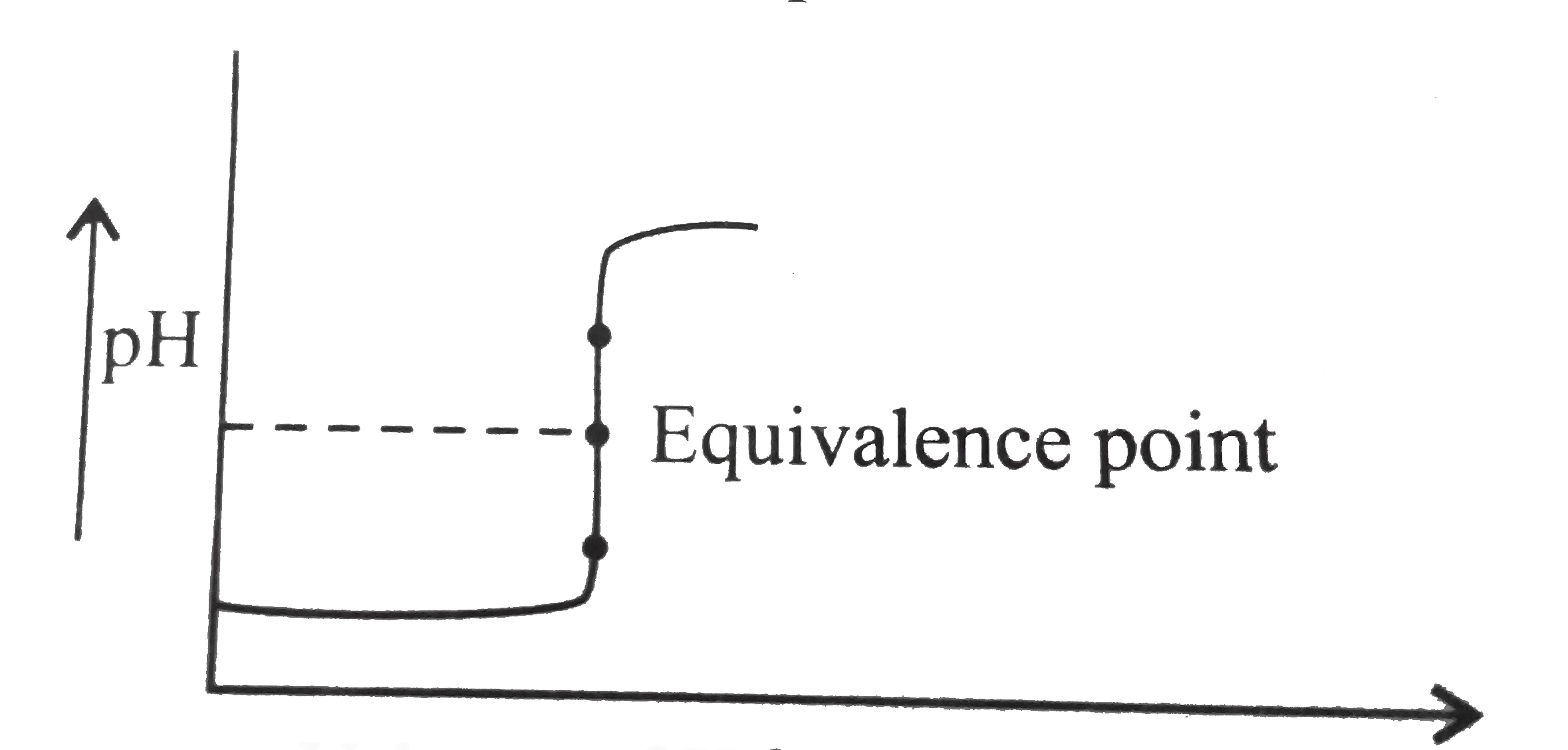Acid base titration
Step by step video solution for Acid base titration by Chemistry experts to help you in doubts & scoring excellent marks in Class 12 exams.
Updated on:21/07/2023Similar Questions
The rapid change of pH near the stoichiometric point of an acid-base titration is the basic of indicator detection. pH of the solution is related to the ratio of the concentration of conjugate acid (H∈) and base (In−) forms of the indicator by the expression
View SolutionThe rapid change of pH near the stocichiometric point of an acid-base titration is the basis of indicator detrection. pH of the solution is related to the ratio of concentration of conjugate acid (HIn) to the concentration of base (In−) froms of the indicator by the expression
View Solution
Knowledge Check
The rapid change of pH near the stoichiometric point of an acid base titration is the basis of indicator detectio. pH of the solution is related to ratio of the concentrations of the conjugate acid (Hin) and base (In−) forms of the indicator given by the expression
Alog([In−])[Hun]=pKIn−pHBlog([HIn])[In−]=pKIn−pHClog([HIn])[In−]=pH−pKInDlog([In−])[HIn]=pH−pKInEquivalence point' in an acid base titration is defined as that point where equivalents of acid become equal to equivalents of base.In case of monoprotic acids and bases there is a single equivalence point, whereas in case of polyprotic acids and bases there may be multiple equivalnece points. Depending upon the type of suybstances present, pH of the soution can be calculated at nay equivalence point.
given that:
Ka1,H3PO4=5×10−4
Ka2,H3PO=5×10−8
Ka3,H3PO4=4.5×10−11<br>(Use:log2=0.3,log3=0.4)
What can be concluded abouyt the final soution obtained on mixing 200 ml of 0.2 MH3PO4 with 50 ml of 0.3 M NaOH solution at 298 K?ATlhe soution will be acidic and will shown buffer [roertiesBThe solution will be acidic but will lnot show buffer proertiesCThe soution will be basic and will show buffer proeritesDThe solution will be basic but will not shown buffer propertiesEquivalence point' in an acid base titration is defined as that point where equivalents of acid become equal to equivalents of base.In case of monoprotic acids and bases there is a single equivalence point, whereas in case of polyprotic acids and bases there may be multiple equivalnece points. Depending upon the type of suybstances present, pH of the soution can be calculated at nay equivalence point.
given that:
Ka1,H3PO4=5×10−4
Ka2,H3PO=5×10−8
Ka3,H3PO4=4.5×10−11<br>(Use:log2=0.3,log3=0.4)
The pH of the solution when 100 ml of 0.1 M NaOH solution at 298 K Is:A8.9B1.5×10−9C5.3D8.5
The rapid change of pH near the stoichiometric point of an acid base titration is the basis of indicator detectio. pH of the solution is related to ratio of the concentrations of the conjugate acid (Hin) and base (In−) forms of the indicator given by the expression
View SolutionThe rapid change of pH near the stoichiometric point of an acid-base titration is the basic of indicator detection. pH of the solution is related to the ratio of the concentration of conjugate acid (H∈) and base (In−) forms of the indicator by the expression
View SolutionIn acid-base titration react rapidly to neutralise each other. Equivalence point is a point at which the acid and the base (or oxidising agent and reducing agent) have beem added in equivalent quantities. The end point in the point at which the titration stops. since the purpose of the indicator is to stop the titration close to the point at which the acid and base were added in equivalent quantities, it is important that the equivalent point and the end point be as close as must change colour at a pH close to that of a solution of the salt of the acid base. Singificantly, the pH changes most rapidly near the equivalent point. The exact shape of a titration curve depends on Ka and Kb of acid and base.

The suitable indicator for the titration is
View SolutionThe rapid change of pH near the stoichiometric point of an acid-base titration is the basis of indicator detection. pH of the solution is related to ratio of the concentration of the conjugate acid (Hin) and base [H+]=10−7+10−8=10−7[1+0.1] forms of the indicator by the expression
View SolutionAcidic solution is defined as a solution whose [H⊕]>[ΘOH]. Base solution has [ΘOH]>[H⊕]. During acid-base titrations, pH of the mixture will change depending on the amount base added. This variation is shown in the form of graph by making plot as titration curves 100mL of 1.0MH3A(Ka1=10−3,Ka2=10−5,Ka3=10−7) is titrated against 0.1MNaOh. The titration curve is as follows.

What would be the pH is more of NaH2A is added to the titration mixture at point C ?
View Solution
